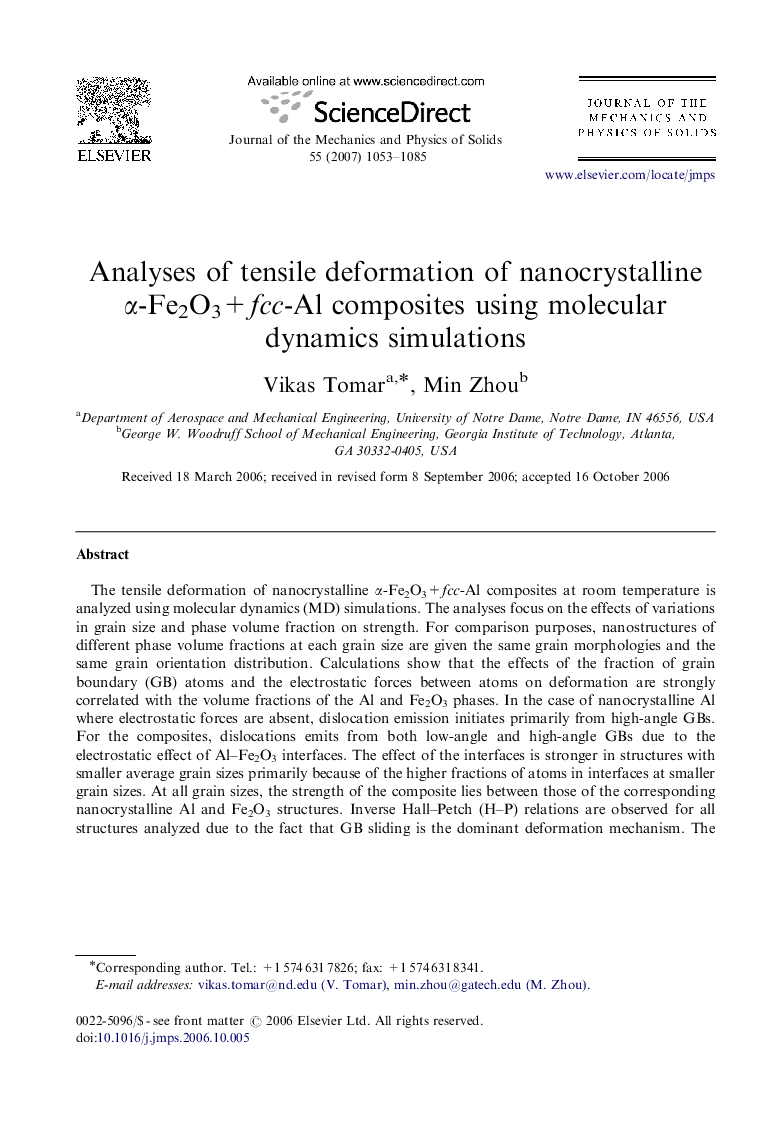| Article ID | Journal | Published Year | Pages | File Type |
|---|---|---|---|---|
| 798348 | Journal of the Mechanics and Physics of Solids | 2007 | 33 Pages |
The tensile deformation of nanocrystalline α-Fe2O3+fcc-Al composites at room temperature is analyzed using molecular dynamics (MD) simulations. The analyses focus on the effects of variations in grain size and phase volume fraction on strength. For comparison purposes, nanostructures of different phase volume fractions at each grain size are given the same grain morphologies and the same grain orientation distribution. Calculations show that the effects of the fraction of grain boundary (GB) atoms and the electrostatic forces between atoms on deformation are strongly correlated with the volume fractions of the Al and Fe2O3 phases. In the case of nanocrystalline Al where electrostatic forces are absent, dislocation emission initiates primarily from high-angle GBs. For the composites, dislocations emits from both low-angle and high-angle GBs due to the electrostatic effect of Al–Fe2O3 interfaces. The effect of the interfaces is stronger in structures with smaller average grain sizes primarily because of the higher fractions of atoms in interfaces at smaller grain sizes. At all grain sizes, the strength of the composite lies between those of the corresponding nanocrystalline Al and Fe2O3 structures. Inverse Hall–Petch (H–P) relations are observed for all structures analyzed due to the fact that GB sliding is the dominant deformation mechanism. The slopes of the inverse H–P relations are strongly influenced by the fraction of GB atoms, atoms associated with defects, and the volume fractions of the Al and Fe2O3 phases.
